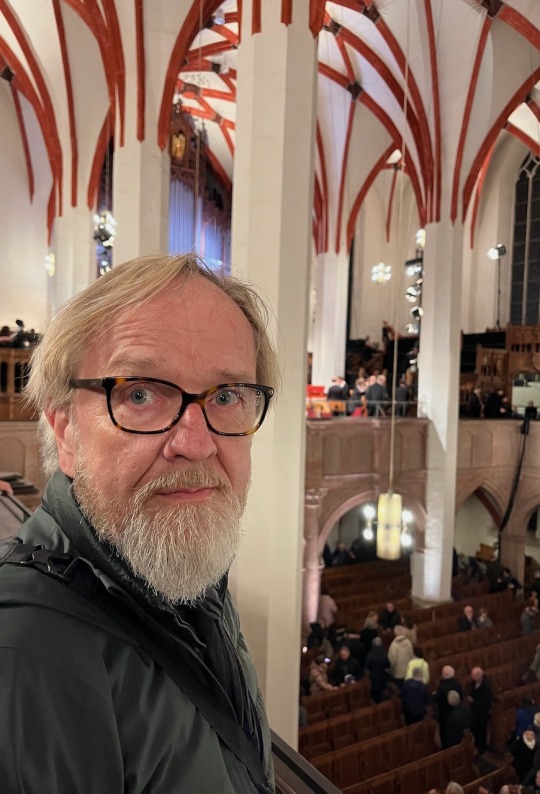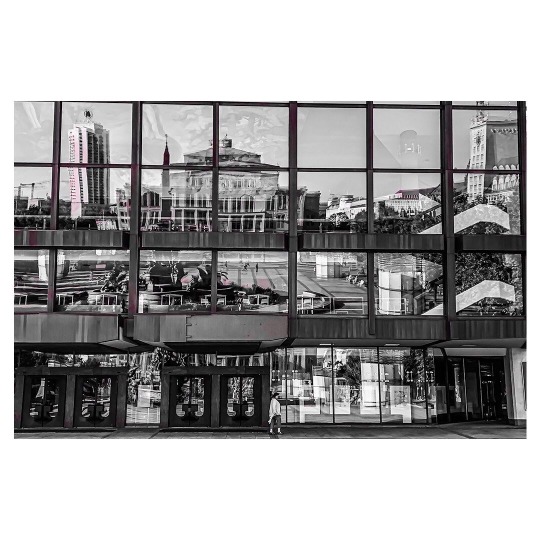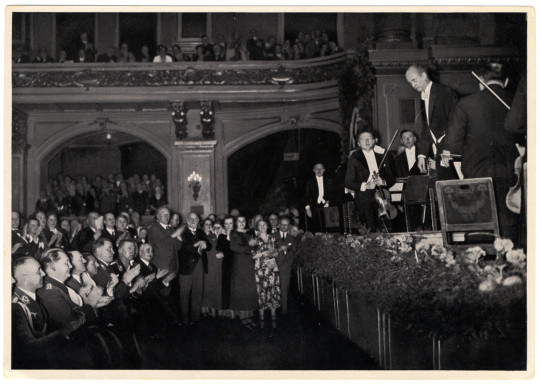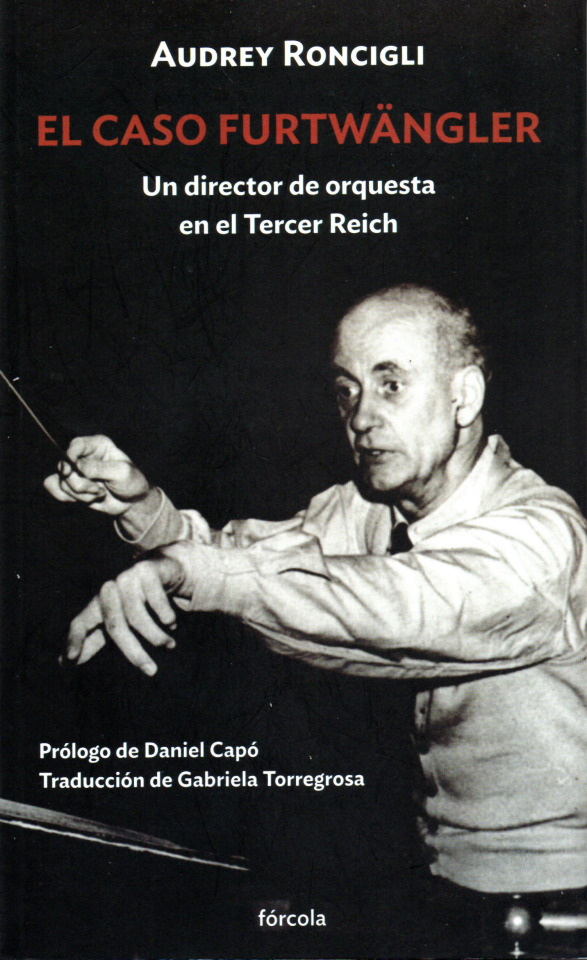#Gewandhaus Leipzig
Explore tagged Tumblr posts
Text

Double Exposed Gewandhaus Leipzig
Today I walked through the city to start working on a new series of monochrome Double Exposure photographs. I like this one very much! Made with my Nikon Z6II & Nikkor Z 28mm f/2.8
#photography#doubleexpomagazine#double exposure photography#doubleexposure#double exposure#multiple exposure#monochrome#rainyday#rainymood#streetphotography#street photography#Gewandhaus#Gewandhaus Leipzig#Leipzig#leipzigram#leipzigcity#leipzigtravel#photography on tumblr#experimental photography#urban photography#reflection
2 notes
·
View notes
Text
westbam wagner gewandhaus leipzig
1 note
·
View note
Text
An Easter Meeting in Leipzig with JS Bach - 300 years on.
Even people who don’t think they like classical music know and even like at least some of the music of Johann Sebastian Bach (1685 – 1750). Those who love classical music are mostly in consensus that he was probably the greatest of all the classical composers. I certainly feel that he stands tall not just in the world of music, but in the world of human creativity too. I believe that we are all a…

View On WordPress
#architecture#Auerbach Cellar#Bach Haus#BachChor Leipzig#Buxtedude#Collegium Vocale Leipzig#Germany#Gewandhaus#Gewandhaus Orchestra#Goethe#JS Bach#Leipzig#Leipzig Opera House#Markus Kaufmann#Max Klinger#Mendelssohn#Mendelssohn Haus#Merseburger Hofmusik#Michael Schöheit#Museum of Fine Arts Leipzig#Nikolaikirche#Schumann#Schumann Haus#St John Passion#Thomaskirche
1 note
·
View note
Text
November 9, the fateful day of the Germans in history
Nov 9, 1313: Battle of Gammelsdorf - Louis IV defeats his cousin Frederick the Fair marking the beginning of a series of disputes over supremacy between the House of Wittelsbach and the House of Habsburg in the Holy Roman Empire
Nov 9, 1848: Execution of Robert Blum (a german politician) - this event is said to mark the beginning of the end of the March Revolution in 1848/49, the first attempt of establishing a democracy in Germany
Nov 9, 1914: Sinking of the SMS Emden, the most successful German ship in world war I in the indo-pacific, its name is still used as a word in Tamil and Sinhala for a cheeky troublemaker
Nov 9, 1918: German Revolution of 1918/19 in Berlin. Chancellor Max von Baden unilaterally announces the abdication of Kaiser Wilhelm II and entrusts Friedrich Ebert with the official duties. At around 2 p.m., the Social Democrat Philipp Scheidemann proclaims the "German Republic" from the Reichstag building. Two hours later, the Spartacist Karl Liebknecht proclaims the "German Soviet Republic" from the Berlin City Palace.
Nov. 9, 1923: The Hitler-Ludendorff Putsch (Munich Beer Hall Putsch) is bloodily suppressed by the Bavarian State Police in front of the Feldherrnhalle in Munich after the Bavarian Prime Minister Gustav Ritter von Kahr announces on the radio that he has withdrawn his support for the putsch and that the NSDAP is being dissolved.
Nov 9, 1925: Hitler imposes the formation of the Schutzstaffel (SS).
Nov 9, 1936: National Socialists remove the memorial of composer Felix Mendelssohn Bartholdy in front of the Gewandhaus concert hall in Leipzig.
Nov 9, 1938: November Pogrom / Pogrom Night ("Night of Broken Glass") organized by the Nazi state against the Jewish population of Germany.
Nov 9, 1939: The abduction of two british officiers from the Secret Intelligence Service by the SS in Venlo, Netherlands, renders the British spy network in continental Europe useless and provides Hitler with the pretext to invade the Netherlands in 1940.
Nov 9, 1948: Berlin Blockade Speech - West Berlin mayor Ernst Reuter delivers a speech with the famous words "Peoples of the world, look at this city and recognize that you cannot, that you must not abandon this city".
Nov 9, 1955: Federal Constitutional Court decision: all Austrians who have acquired german citizenship through annexation in 1938, automatically lost it after Austria became sovereign again.
Nov 9, 1967: Students protest against former Nazi professors still teaching at German universities, showing the banner ”Unter den Talaren – Muff von 1000 Jahren” ("Under the gowns – mustiness of 1000 years", referring to the self-designation of Nazi Germany as the 'Empire of 1000 Years') and it becomes one of the main symbols of the Movement of 1968 (the German Student Movement).
Nov 9, 1969: Anti-Semitic bomb attack - the radical left-winged pro-palestinian organization “Tupamaros West-Berlin” hides a bomb in the jewish community house in Berlin. It never exploded though.
Nov 9, 1974: death of Holger Meins - the member of the left-radical terrorist group Red Army Faction (RAF) financed in part by the GDR that eventually killed 30 people, dies after 58 days of hunger strike, triggering a second wave of terrorism.
Nov 9, 1989: Fall of the Berlin Wall - After months of unrest, demonstrations and tens of thousands escaping to West Germany, poorly briefed spokesman of the newly formed GDR government Günter Schabowski announces that private trips to non-socialist foreign countries are allowed from now on. Tens of thousands of East Berliners flock to the border crossings and overwhelm the border guards who had not received any instructions yet because the hastily implemented new travel regulations were supposed to be effective only the following day and involved the application for exit visas at a police office. Subsequently, crossing the border between both German states became possible vitrually everywhere.
232 notes
·
View notes
Text
Adi Pic of the Day 📸
Adolf Hitler at a concert of the Leipzig Gewandhaus Orchestra on 1 February 1935. The NS-Kulturgemeide (National Socialist Cultural Community), an organization established in 1934, evolved from Alfred Rosenberg's Kampfbund für Deutsche Kultur founded in 1928 to oversee cultural education and the arts. In attendance for this Winter Relief charity concert at the Philharmonie in Berlin are from left: SA-Group Leader Wilhelm Brueckner, Adolf Hitler, Reich Leader Alfred Rosenberg, adjutant Fritz Wiedemann and Reich Leader Philip Bouhler.

37 notes
·
View notes
Text

A real photo postcard featuring a 1912 photograph of Arthur Nikisch. Arthur Nikisch was born in Hungary on 12th Oct 1855 and died in Leipzig on 23rd Jan 1922. He held numerous important positions during his career including - conductor of the Boston Symphony Orchestra, director of the Budapest Royal Opera, director of the Leipzig Gewandhaus Orchestra, principal conductor of the Berlin Philharmonic with whom he made one of the earliest recordings of a complete symphony, Beethoven's 5th, with the Berlin Philharmonic.
33 notes
·
View notes
Text

Gewandhaus/ concerthall Leipzig 2023
#original photography on tumblr#original photography blog#stephanelebretonphoto#3rdviewphotographyberlin#stephanelebretonphotography#stephanelebreton photography#black and white#berlin#monochrome#original photographers
15 notes
·
View notes
Text







Edith Walker (1968-1950) as Isolde
She sang at age 14 as a soloist in the Old Church of Hopewell, then in Utica (New York) and on Long Iceland. She worked for a while as a school teacher. She came to Europe in 1891 and was trained by Aglaia Orgeni in Dresden. Further studies with Marianne Brandt in Vienna. She made her debut in 1894 at the Berlin Court Opera as Fides in ‘’Prophet’’ by Meyerbeer. First major success in 1895 with a concert in Leipzig Gewandhaus under Carl Reinecke. In 1895 she was engaged by the Vienna Court Opera, where she sang the role of Fides in ‘’Prophet’’ by Meyerbeer and Azucena in ‘’Trovatore’’ and remained until 1903. In 1896 she sang in the Vienna premiere of the opera ‘’The Evangelimann’’ of Kienzl. At the Salzburg Mozart Festival in 1901 she created the role of Donna Elvira in ‘’Don Giovanni’’. In 1903, after a dispute with Gustav Mahler, she left the Vienna Opera House. In 1903 she was engaged by the Metropolitan Opera in New York, where she made her debut as Amneris in ‘’Aida’’. She appeared at the Metropolitan Opera in “Lohengrin”, “Tristan und Isolde”, ‘’Faust’’, “Gioconda”, ‘’Martha’’, ‘’Favorita’’, “ and ‘’Lucrezia Borgia’’ (1904). In 1905 she sang here in the premiere of Johann Strauss’s operetta ‘’Die Fledermaus’’. Then she joined in the 1906-07 season at the Court Opera in Berlin and from 1907 to 1912 was a celebrated artist of the Hamburg Opera. At the Covent Garden Opera in London she performed in 1900 as Amneris, Ortrud, Fricka and Waltraute, then in 1908 and 1910 as Isolde as well as Thirza “The Wreckers” by Mrs. Ethel Smith and Elektra on 10/19/1910 in the English premiere of Richard Strauss’s opera ‘’Elektra’’. She made guest appearances in Brussels, Leipzig, Frankfurt (1907-12), Cologne and Prague with great success, she was especially admired as an interpreter in R. Wagner’s operas. At the Bayreuth Festival in 1908, she sang the role of Kundry in ‘’Parsifal’’ and Ortrud in “Lohengrin”. In 1910 she sang with great triumph in the Strauss Festival in Holland as Salome and Elektra. In 1909 she sang at the Beethoven Festival in the Hague the role of Leonore in ‘’Fidelio’’ under Willem Mengelberg. In the 1912-1917 seasons she worked at the Court Opera in Munich. In 1918 she sang at the Municipal Theatre of Elberfeld her farewell performance in Nibelungenring. After her retirement from the stage, Walker resided in Scheveningen, Holland until 1919 when she moved to Paris. She worked there as a voice teacher where she taught out of a private studio. In 1933 she joined the faculty at the American Conservatory in Fontainebleau where she taught through 1936. She then moved back to New York City where she continued to teach until her death 14 years later. Among her notable pupils were Irene Dalis and Blanche Thebom. She died at her home in New York City in 1950 at the age of 79 after a brief illness.
#classical music#opera#music history#bel canto#composer#classical composer#aria#classical studies#maestro#chest voice#mezzo-soprano#Edith Walker#tristan und isolde#tristan and isolde#richard wagner#classical musician#classical musicians#classical history#history of music#historian of music#muscian#musicians#diva#prima donna#Royal Opera House#Covent Garden#Metropolitan Opera#The Metropolitan Opera#Met#The Met
4 notes
·
View notes
Text





Was für ein irrer Abend im Gewandhaus in Leipzig.
7 notes
·
View notes
Photo

Dear all, We are happy to announce that ”Socialist Modernism in Germany”, the second photo album of @_BA_CU 's planned series, is available in a second publication in 800 copies. The photo album includes landmarks of socialist modernist architecture in Germany – from 1955 to 1990. Those who are interested in #SocialistModernism are able to order the book on @UrbanicaGroup @ushopamazon 👈🏻🚚distributor page, (Link in our profile) ; link: http://urbanicagroup.ro/ushop/ or AMAZON: https://www.amazon.com/s?me=A33QJE9SPOCVM4&marketplaceID=ATVPDKIKX0DER by selecting the Photo album from among the books listed. (Shipping worldwide) #SocialistModernism #_BA_CU B.A.C.U. Association explains socialist modernist tendencies, it presents – in color photographs – a functional image of the buildings and their often original elements that synthesize local culture and traditions, while bringing you up to date with their current state of conservation. The 71 landmarks included in this volume have been organized by function, into five sections. The book contains the authors’ view on Eastern German modernist architecture. Print run 800 Pages 194+ 1 Spread/ GERMANY-SOC MOD Map German and English Size 26×28.5 cm Weight 1.25 kg Designed and published by @_BA_CU Association 1st Centrum Warenhaus, Lausitzer Platz, Bautzner Allee, Hoyerswerda-Neustadt, 1965-69. Aluminum elements were designed by Harry Müller. 2 House of Mining and Energy Workers, now Lausitz Halle, Hoyerswerda, 1977-84, architect: Jens Ebert mosaic wall by Fritz Eisel (1983/84) 3 Neues Gewandhaus, Augustusplatz, Leipzig 1977 - 81. Architect Rudolf Skoda, Eberhard Göschel, Volker Sieg, Winfried Sziegoleit 5 New wing of the former Stasi headquarters building. Leipzig, 1970s 7 Stadthalle Chemnitz, Chemnitz (formerly Karl-Marx Stadt) 1969 and 1974, architect Rudolf White, Hubert Schiefelbein 9: Housing building, Lusan neighbourhood, Gera, Mural by artist: Guenter Kerzig with Peter Kraft 10: Centrum Warenhaus/Karstadt, Magdeburg, 1970–1973, Architect: Karl-Ernst, Anne-Monika Zorn (c) BACU https://www.instagram.com/p/CgcPF26MuKQ/?igshid=NGJjMDIxMWI=
4 notes
·
View notes
Text
El sospechoso habitual

[Furtwängler dirige a la Filarmónica de Berlín con Hitler en la primera fila de la audiencia. / USHMM, CORTESÍA DE GRETCHEN VAN POOL]
Fórcola publica en español un acercamiento a la polémica figura de Wilhelm Furtwängler
Wilhelm Furtwängler (Berlín, 1886 - Baden Baden, 1954) es un auténtico mito de la dirección orquestal. Este libro de la historiadora francesa Audrey Roncigli no tiene por objeto exactamente una biografía de su figura, aunque también la contenga en parte, sino un acercamiento a la visión que se tuvo (y se tiene) de su postura hacia el régimen nazi. Porque el caso Furtwängler no va exactamente de la relación del músico con el Tercer Reich, sino de cómo se vio (sobre todo, fuera de Alemania) esa relación. Aunque el original de Roncigli se publicó en el año 2009, la nefasta moda woke ha revitalizado todos los juicios sobre el comportamiento de grandes figuras del pasado, y en ese sentido, la publicación de Fórcola resulta oportuna.
Titular de la Filarmónica de Berlín desde 1922 y habitual en los podios de la Gewandhaus de Leipzig y de la Filarmónica de Viena, Furtwängler era ya la gran figura de la dirección en Alemania cuando en 1933 los nazis toman el poder. Aunque nunca tuvo el carnet del Partido, defendió y protegió a los judíos de su orquesta, fingió enfermedades para ausentarse de los conciertos por los cumpleaños de Hitler, dimitió en 1934 del cargo de vicepresidente de la Cámara de Música del Reich, se opuso a muchas directrices oficiales y se negó a dirigir en los países ocupados por Alemania después de 1939, el régimen no pudo sustraerse a usar la imagen de Furtwängler como sustento propagandístico en el exterior.
El músico berlinés decidió quedarse en su país, que para él nunca fue una “Alemania nazi”, sino una “Alemania gobernada por los nazis”, en la que la música era más necesaria que nunca, pero su postura no fue entendida por muchos otros artistas que sí abandonaron Alemania, y con ella privilegios y estabilidad vital. Por más que en los estertores de la guerra, alertado por Albert Speer, Furtwängler huyó a Suiza, escapando al arresto de la Gestapo, que acaso lo vinculaba a los conspiradores de la Operación Valquiria, el maestro fue sometido a dos procesos de desnazificación (uno en Viena y otro en Berlín), y convertido luego en una especie de chivo expiatorio, símbolo de la responsabilidad colectiva por la guerra, especialmente en los Estados Unidos, donde sufrió el boicot y el rechazo generalizado de la opinión pública, los músicos y sus instituciones.
Más allá de la narración de los hechos y de las valoraciones morales de unos y otros, la mayor aportación de Roncigli tiene que ver con el estudio detallado del repertorio que cultivó Furtwängler, que se divide en tres períodos (antes de 1933, entre 1933 y 1945 y de 1945 a 1954), y se compara con las directrices oficiales para constatar que nunca dirigió el berlinés tan poco la música de Beethoven, Brahms, Strauss y Weber –junto a Wagner y Bruckner los preferidos del régimen–, como durante la época nazi. Un último capítulo dedicado al análisis de algunas de sus grabaciones de guerra comparadas con las hechas de las mismas obras durante la posguerra pretende añadir una interpretación política al caso, según la cual, el director mostraría con diversos rasgos de estilo interpretativo su actitud ante el estado de las cosas, aunque el componente de apreciación subjetiva resulta en este terreno en absoluto despreciable.
El caso Furtwängler sobrevivió al maestro, y Roncigli se hace también eco de la bibliografía generada después de su muerte y de algunas obras de ficción que se le han dedicado. Aunque su postura pretende ser objetiva, los sesgos en defensa del director berlinés resultan bastante evidentes a lo largo de toda la obra. En cualquier caso, subsiste una reflexión básica, la de la relación entre el artista y el poder, sobre todo cuando este es indiscutiblemente tiránico, con todas sus derivaciones éticas y sociales.
[Diario de Sevilla. 2-07-2023]

El caso Furtwängler. Un director de orquesta en el Tercer Reich Audrey Roncigli. Trad. Gabriela Torregrosa. Madrid: Fórcola, 2022. 367 págs. 29,50 euros.
2 notes
·
View notes
Text
Jessye Norman rejected these recordings. Should they be released?
The Maestro was in a bad mood. And the singer was unhappy. The Berlin Wall had fallen nearly a decade earlier, but Leipzig, in the former East Germany, still left a lot to be desired when it came to an opera star’s material needs. Conductor Kurt Masur and soprano Jessye Norman – whose album collaboration on Strauss’ Four Last Songs was already a classic – had joined the Leipzig Gewandhaus…

View On WordPress
2 notes
·
View notes
Text
October 9, 1989: The day the dictatorial GDR regime broke
Throughout the 1980s, discontent among the population of the GDR about the economical and political situation kept growing. Nonetheless, the ruling party SED (Socialist Union Party of Germany) upheld its role as the only governing part of the state, continuing the process of the "socialist revolution" in the state. People started protesting against oppression of dissidents.
The situation became explosive after the rigged local elections on May 7, 1989. People didn't have the choice between multiple options. Instead, there was only one list of the "National Front", which was automatically counted as "yes" as soon as the ballot was dropped into the urn. The only way to vote "no" was to strike all entries in the list through with a straight line. Although this was a tedious proces that could easily be traced by the Stasi officers in the polling stations, many people made use of this way of voting "no". For the first time, citizens gathered in the polling stations to observe the process of counting. Althouth this was explicitly allowed by law (§ 37 of the voting act), access was denied in almost all cases. Nonetheless, members of the church documented electoral fraud and made it public. This led to the first protests, which the Stasi and regular police forced tried to quench. Around the same time, a mass exodus through neighboring countries to West Germany started.
These protests attracted more and more people. In many cases, the demonstrations started after peace prayers in the protestant churches throughout the country. But still, the oppressive system of the state held the upper hand. On October 7, 1989, the police forces, workers' militia, and Stasi arrested thousands of protesters in Leipzig and arrested them in horse stables on the grounds of the agricultural fair.
This led pastor Christoph Wonneberger to publish a plea for non-violence, which was agreed to by some SED secretaries read out loud over the city's public announcement system (by Leipzig's Gewandhaus Orchestra's conductor Kurt Masur) and during the peace prayers. On October 9, 1989, the situation was tense as approx. 130,000 people took to the streets, marching past the Stasi central. A massive presence of state forces was also present, and people feared a "Chinese solution", referring to the violent Tiananmen Square massacre earlier that year. However, the plea for non-violence by the power of its wording kept both protesters and state forces from violent actions and the protests ended peacefully and without any arrests.
This was the first time the GDR authorities gave in to the masses of protesters. The word spread, and protests sprang up in more and more cities throughout the country, leading to state leader Erich Honecker's demise on October 18 and culminated in the fall of the Berlin Wall on November 9, 1989, which ultimately led to the German reunification.
157 notes
·
View notes
Text
Events 11.28 (before 1920)
587 – Treaty of Andelot: King Guntram of Burgundy recognizes Childebert II as his heir. 936 – Shi Jingtang is enthroned as the first emperor of the Later Jin by Emperor Taizong of Liao, following a revolt against Emperor Fei of Later Tang. 1443 – Skanderbeg and his forces liberate Kruja in central Albania and raise the Albanian flag. 1470 – Champa–Đại Việt War: Emperor Lê Thánh Tông of Đại Việt formally launches his attack against Champa. 1520 – After 38 days, an expedition under the command of Ferdinand Magellan completes the first passage through the Strait of Magellan and enters the Pacific Ocean. 1582 – In Stratford-upon-Avon, William Shakespeare and Anne Hathaway pay a £40 (equivalent to £14,557 in 2023) bond in lieu of posting wedding banns, which enables them to marry immediately. 1627 – The Polish–Lithuanian Commonwealth Navy has its greatest and last naval victory in the Battle of Oliwa. 1660 – At Gresham College, twelve men, including Christopher Wren, Robert Boyle, John Wilkins, and Sir Robert Moray decide to found what is later known as the Royal Society. 1666 – At least 3,000 men of the Royal Scots Army led by Tam Dalyell of the Binns defeat about 900 Covenanter insurgents led by James Wallace of Auchens in the Battle of Rullion Green. 1785 – The first Treaty of Hopewell is signed, by which the United States acknowledges Cherokee lands in what is now East Tennessee. 1798 – Trade between the United States and modern-day Uruguay begins when John Leamy's frigate John arrives in Montevideo. 1811 – Beethoven's Piano Concerto No. 5 in E-flat major, Op. 73, premieres at the Gewandhaus in Leipzig. 1814 – The Times of London becomes the first newspaper to be produced on a steam-powered printing press, built by the German team of Koenig & Bauer. 1821 – Panama Independence Day: Panama separates from Spain and joins Gran Colombia. 1843 – Ka Lā Hui (Hawaiian Independence Day): The Kingdom of Hawaii is officially recognized by the United Kingdom and France as an independent nation. 1861 – American Civil War: The Confederate States of America accept a rival state government's pronouncement that declares Missouri to be the 12th state of the Confederacy. 1862 – American Civil War: In the Battle of Cane Hill, Union troops under General James G. Blunt defeat General John Marmaduke's Confederates. 1862 – Notts County F.C. is founded in Nottingham, England, making it the Worlds Oldest professional Association football club in the world. 1885 – Bulgarian victory in the Serbo-Bulgarian War preserves the Unification of Bulgaria. 1893 – Women's suffrage in New Zealand concludes with the 1893 New Zealand general election. 1895 – The first American automobile race takes place over the 54 miles from Chicago's Jackson Park to Evanston, Illinois. Frank Duryea wins in approximately 10 hours. 1899 – The Second Boer War: A British column is engaged by Boer forces at the Battle of Modder River; although the Boers withdraw, the British suffer heavy casualties. 1905 – Irish nationalist Arthur Griffith founds Sinn Féin as a political party with the main aim of establishing a dual monarchy in Ireland. 1908 – A mine explosion in Marianna, Pennsylvania, kills 154 men, leaving only one survivor. 1912 – Albania declares its independence from the Ottoman Empire. 1914 – World War I: Following a war-induced closure in July, the New York Stock Exchange re-opens for bond trading. 1917 – The Estonian Provincial Assembly declares itself the sovereign power of Estonia. 1918 – The Soviet Forces move against Estonia when the 6th Red Rifle Division strikes the border town of Narva, marking the beginning of the Estonian War of Independence. 1919 – Lady Astor is elected as a Member of the Parliament of the United Kingdom. She is the first woman to sit in the House of Commons. (Countess Markievicz, the first to be elected, refused to sit.)
0 notes
Text


Felix Mendelssohn (3 February 1809 – 4 November 1847)
I'm making stickers of some of my favourite quotes by composers, so I thought I'd share some Mendelssohn ones!
Here's also a link to my favourite recording of my favourite Mendy composition. I also love the little story behind it.
From wikipedia: Following his appointment in 1835 as principal conductor of the Leipzig Gewandhaus Orchestra, Mendelssohn named his childhood friend Ferdinand David as the orchestra's concertmaster. The work's origins derive from this professional collaboration. In a letter dated 30 July 1838, Mendelssohn wrote to David: "I should like to write a violin concerto for you next winter. One in E minor runs through my head, the beginning of which gives me no peace."
Bro, that opening motif is the goat, and I love how it repeats throughout the first movement in different variations.
#this piece legit helped save my life during a dark time#I ain't about that God life but it's too freaking good of a quote#big thanks to twosetviolin for introducing it to me#it's a good fucking piece and I don't care what anyone else says#felix mendelssohn#mendelssohn violin concerto#quote#Spotify
1 note
·
View note
